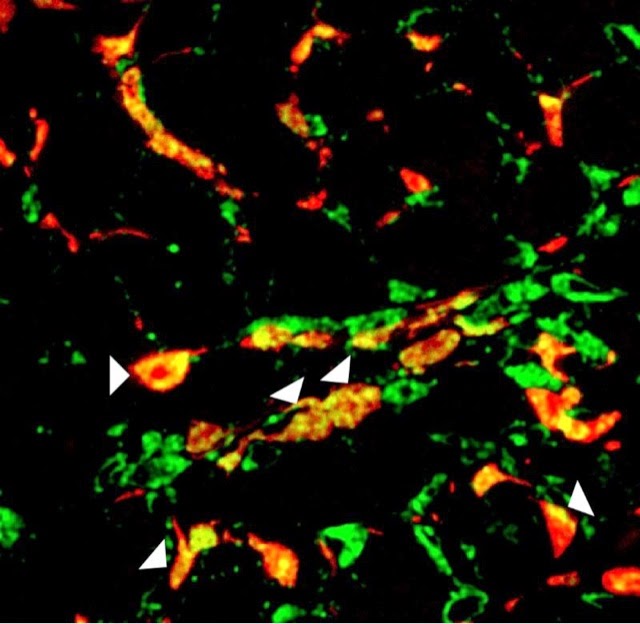|
In a study that could point the way toward a new strategy for treating patients after a heart attack, UCLA stem cell researchers led by associate professor of medicine (cardiology) and Eli and Edythe Broad Center of Regenerative Medicine and Stem Cell Research member Dr. Arjun Deb have discovered that some scar-forming cells in the heart, known as fibroblasts, have the ability to become endothelial cells (the cells that form blood vessels). The UCLA team also found that a drug could enhance this phenomenon and improve the repair process after a heart attack.
The findings are reported in the October 15, 2014 edition of the journal Nature.
"It is well known that increasing the number of blood vessels in the injured heart following a heart attack improves its ability to heal," said Dr. Deb, the study's senior author. "We know that scar tissue in the heart is associated with a poorer prognosis. Reversing or preventing scar tissue from forming has been one of the major challenges of cardiovascular medicine."
Heart disease remains a leading cause of death in the United States. Each year in this country, approximately 720,000 people experience a heart attack (roughly one every 30 seconds) and about 600,000 people die of heart disease.
A heart attack most commonly occurs when there is a sudden blockage of the flow of blood through a vessel in the heart. The portion of the heart muscle that fails to receive adequate blood dies and is replaced by non-functional scar tissue (a process known as fibrosis) reducing the ability of the heart to adequately pump blood. Once scar forms it is thought to persist throughout the lifetime of the individual. Scar-forming cells (fibroblasts) and blood vessel-forming cells (endothelial cells) exist in close proximity in the injured heart.
Several years ago, Dr. Deb and his colleagues were investigating the relationship between the fibroblasts and endothelial cells. Performing experiments in mice in which scar-forming cells in the heart were genetically labeled, the researchers unexpectedly discovered that many of the fibroblasts in the heart's injured region changed into endothelial cells and contributed directly to blood vessel formation, a phenomenon the research team coined mesenchymal-endothelial transition, or MEndoT.
The researchers identified a molecular mechanism regulating MEndoT and administering a small molecule to augment MEndoT led to less scarring and better healing of the heart. The researchers plan to test similar small molecules in other models to determine whether the strategy could potentially be translated for human benefit.
"Our findings suggest the possibility of coaxing scar-forming cells in the heart to change their identity into blood vessel-forming cells, which could potentially be a useful approach for better heart repair," said Dr. Deb. "There are remarkable similarities in the process of scarring in different organs after injury. Our hope is that this approach can be used to treat scar tissue in other organs as well."
The research was supported by the National Institutes of Health.
|
| About the Eli and Edythe Broad Center of Regenerative Medicine and Stem Cell Research
The stem cell center was launched in 2005 with a UCLA commitment of $20 million over five years. A $20 million gift from the Eli and Edythe Broad Foundation in 2007 resulted in the renaming of the center. With more than 200 members, the Eli and Edythe Broad Center of Regenerative Medicine and Stem Cell Research is committed to a multi-disciplinary, integrated collaboration of scientific, academic and medical disciplines for the purpose of understanding adult and human embryonic stem cells. The center supports innovation, excellence and the highest ethical standards focused on stem cell research with the intent of facilitating basic scientific inquiry directed towards future clinical applications to treat disease. The center is a collaboration of the David Geffen School of Medicine, UCLA's Jonsson Comprehensive Cancer Center, the Henry Samueli School of Engineering and Applied Science and the UCLA College of Letters and Science.
To learn more about the center, visit our web site at http://www.stemcell.ucla.edu.
|

No comments:
Post a Comment